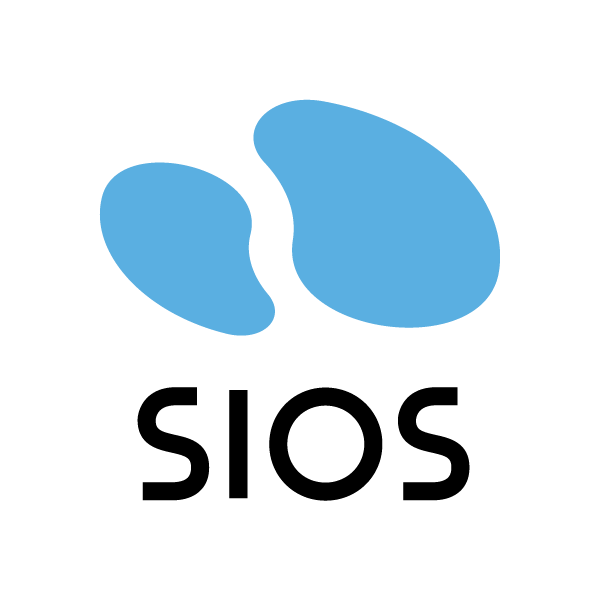Please see each section for environment-specific restrictions and notations.
| Supported Virtualization | LifeKeeper for Linux | |||||||||
|---|---|---|---|---|---|---|---|---|---|---|
| v9.6.1 | v9.6.2 | v9.7.0 | v9.8.0 | v9.8.1 | v9.9.0 | v9.9.1 | ||||
| VMware vSphere |
6.5, 6.7, 7.0 |
6.5, 6.7, 7.0 |
6.5, 6.7, 7.0, 8.0 |
6.5, 6.7, 7.0, 8.0 |
6.5, 6.7, 7.0, 8.0, 8.0U1, 8.0U2, 8.0U3 |
6.5, 6.7, 7.0, 8.0, 8.0U1, 8.0U2, 8.0U3 |
6.5, 6.7, 7.0, 8.0, 8.0U1, 8.0U2, 8.0U3 | |||
| VMware Cloud on AWS | SDDC version 1.19 or later | SDDC version 1.19 or later | SDDC version 1.19 or later | SDDC version 1.19 or later | SDDC version 1.19 or later | |||||
| KVM | provided with the supported Linux distributions | |||||||||
| Oracle VM Server for x86 | 3 | 3 | 3 | 3 | 3 | 3 | 3 | |||
| Nutanix Acropolis Hypervisor (AHV) |
20160925.57 20160925.90 |
20160925.57 20160925.90 |
20160925.57 20160925.90 |
20160925.57 20160925.90 20220304.423 20220304.480 |
20160925.57 20160925.90 20220304.423 20220304.480 |
20160925.57 20160925.90 20220304.423 20220304.480 20230302.102001 |
20160925.57 20160925.90 20220304.423 20220304.480 20230302.102001 |
|||
| Hyper-V | Windows Server 2022 | Windows Server 2022 | Windows Server 2022 | Windows Server 2022 | ||||||
VMware vSphere
vSAN configuration is supported for vSphere 6.5 and 6.7, except for RDM, which is not supported by VMware.
vSAN configuration is not supported for vSphere 7.0 or later.
VMware vMotion and Storage vMotion are available, but with the following limitations:
- vMotion is supported when using RDM as shared storage. If LifeKeeper uses SCSI Reservation on the RDM, the environment must be configured so that the RDM is accessible from separate hosts and paths. vMotion is also supported on other storage configurations.
- In configurations using the VMDK as Shared Storage Recovery Kit, disks protected by LifeKeeper cannot be moved using Storage vMotion.
VMware Cloud on AWS
vSAN configuration is supported only on VMware Cloud on AWS.
VMware Cloud on AWS can be used with shared disks that do not use reservations and it can also be used with DataKeeper. If you want to use it, IO fencing configuration is required separately.
KVM
DataKeeper can be used as shared data storage.
Fiber channel SAN and shared SCSI cluster configurations are not supported.
Oracle VM Server for x86
DataKeeper can be used as shared data storage.
Fiber channel SAN and shared SCSI cluster configurations are not supported.
Hyper-V
Shared storage and DataKeeper can be used as shared data storage.
SCSI reservation is not supported for shared storage. Please use QWK. Configure guest OS and shared storage to be connected with the Hyper-V virtual fiber channel. Refer to Hyper-V virtual fiber channel.
Live migration and Quick migration features of Hyper-V in Windows Server are supported.
Additionally, using LifeKeeper on Hyper-V virtual machines configured for Hyper-V Failover Clustering is not supported.
To enhance availability, do not run all LifeKeeper clusters on a single Hyper-V node except during maintenance.
When LifeKeeper is installed in a Hyper-V environment, it recognizes its own node is in an Azure environment. For details and workarounds, see Troubleshooting > Known Issues / Restrictions > Installation.
Red Hat OpenShift Virtualization
Available OpenShift Virtualization Features
- Live migration
- Snapshot
- Precautions when taking snapshots
- When using DataKeeper, snapshots must be taken in a manner that prevents data inconsistencies between the source and target nodes. To ensure this, stop all target nodes before taking snapshots, and make sure to take snapshots on all nodes at the same point in time.
- Precautions when restoring
- Stop all LifeKeeper cluster nodes before restoring.
- When restoring from a snapshot, the PVC is replaced by a different PVC. If a shared disk is attached, you need to manually specify the same PVC for all virtual machines except the first one restored, as their PVCs will either remain as the old PVC or be left unspecified.
- Precautions when taking snapshots
Configuration Requirements
Storage Requirements
The requirements for disks on which LifeKeeper is installed and those protected by LifeKeeper are as follows:
- Storage class is ocs-storagecluster-ceph-rbd-virtualization
- Type is Disk
- When protecting a shared disk with LifeKeeper, use the same Disk name on both nodes
- Interface is virtio
- However, the interface should be set to SCSI only when using a shared disk.
- Disable SCSI Reservation for LifeKeeper
Network Requirements
Networks used for LifeKeeper communication paths and IP resources must meet the following requirements.
- It is a Linux bridge network
- The network interface controller model is virtio
Client Requirements
- The intended clients are VMs and containers on the same OpenShift Virtualization.
Restrictions
- The following ARKs are not available for use.
- LB Health Check Kit
- ARKs for platforms
- Recovery Kit for EC2
- Recovery Kit for Route 53
- Recovery Kit for Oracle® Cloud Infrastructure
- VMDK as Shared Storage Recovery Kit
- ARKs for SAP products
- SAP Recovery Kit
- SAP HANA Recovery Kit
- SAP MaxDB Recovery Kit
- Sybase Recovery Kit
- WebSphere MQ Recovery Kit
- Multipath Recovery Kits
- The tcp_remote mode and the block type of storage mode for Quorum/Witness are not available.
- Migration of a virtual machine with LifeKeeper installed between other virtualization platforms and OpenShift Virtualization is not supported.
- In the event of a failure related to OpenShift Data Foundation, LifeKeeper may not function as expected. We recommend implementing sufficient redundancy and preparing a solution other than LifeKeeper.



Post your comment on this topic.